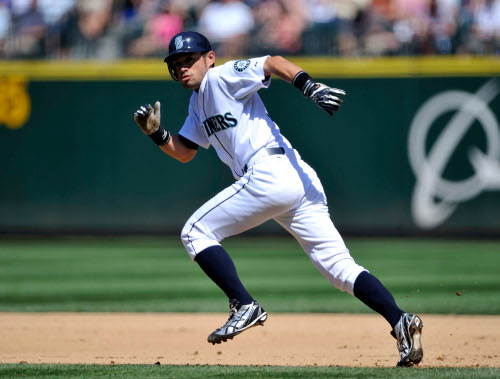Drills to prevent reflexive looks
October 14, 2014 by Coach McCreary
Filed under Coaching, Mental Side
In my psychology classes, there is an activity I do to teach about reflexes. I have the students line up with their hands on the shoulders of the person in front of them. I give a signal to the last person in line and they lightly squeeze the shoulders of the person in front of them. When that person feels the squeeze they immediately squeeze the next person’s shoulders. That continues until the “message” reaches the end of the line. In this activity, the message goes down the line VERY quickly. That is because each person is squeezing the next person as a reflex. No thought is involved. In fact, a reflexive action does not involve any thought at all. That’s why your hand will pull away from a hot stove quicker than your brain’s ability to think about it. I won’t bore you with the science of it but the key is
that there is no thought going into the movement of a reflex.
The second time I have them do the drill I tell the students that one of their shoulders will be squeezed (left or right). If their right shoulder is squeezed then they have to squeeze the left shoulder of the person in front of them. If their left shoulder is squeezed, they squeeze the right shoulder. This time the “message” travels significantly slower down the line because each student has to mentally process which shoulder was touched and which shoulder they now have to squeeze. Having to think about it slows the process down.
In yesterday’s post, I described what I called “reflexive looks.” A pitcher turning his head to look at a runner at second but doesn’t notice how big his lead is. A batter looking down for a sign but doesn’t notice the bunt sign. Both players are looking in the proper direction at the correct time because that is what they have trained to do. However, because no thinking is occurring, they don’t see what they need to see.
To avoid this from happening, coaches can build some things into their drills to force players to think about what they are looking at. Here are two:
Hit and run drills. When the runner breaks towards second and looks in at the plate to see what happens on the pitch, colors can be shown (flashcards) or yelled out. Certain colors mean STOP and get back to first. Other colors mean KEEP GOING.
Checking runners. During bullpen sessions, pitchers come set and look back as if to check a runner. A coach or another player calls out a number or even a simple equation like 2+2. If the number or answer to the equation is an odd number, the pitcher throws a pitch. If the number or answer is an even number, the pitcher steps off or does a pretend pickoff move to second.
These two techniques can also be helpful with preventing “reflexive swings” which is something I talked about in this post HERE. They could swing or take depending on the color or number.
The point of these drills and any others that you create force the player to process what they are seeing and hearing.
Tomorrow’s post: Baseball folkways vs baseball mores






Leave a Reply